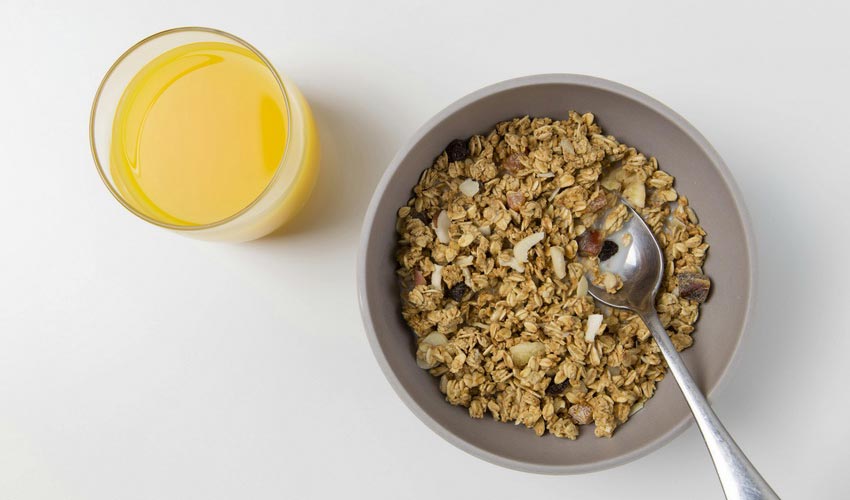The Body Type Diet
If I look in the mirror, I see a compact, older man with a small paunch and a defined muscular physique. Without judgment, now you look into the mirror. What do you see staring back at you? Are you met with long, lean limbs, wide hips, a bit of belly, or a sporty, muscular physique? Embracing our unique body types can be the key to unlocking our full potential when it comes to diet and exercise. Some healthcare professionals believe that understanding our body type can guide us towards the most effective ways to nourish and sculpt our bodies. Personally, I have not started this type of diet. To be honest, I’m not good at following a certain diet but this one seems interesting.
The concept of the body type diet suggests that tailoring our eating habits to our individual body shapes can lead to better results in terms of weight loss and overall health. By fuelling our bodies based on our specific needs, we may be able to achieve our fitness goals more efficiently. However, the body type diet is a topic of ongoing debate among experts, as there is limited research supporting its effectiveness. Despite the lack of consensus, exploring how our unique body types may impact our dietary and fitness choices could hold the key to transforming our bodies and achieving our wellness goals. The mirror reflects more than just our physical appearance; it may also reveal insights into how we can optimise our health and well-being.

What Means Eating According to
Advocates of this plan suggest that understanding your body type can provide valuable insights into your metabolism and hormonal function, offering guidance on how efficiently you process carbohydrates and how much protein you require. By deciphering these clues, you may uncover the optimal path to achieving peak health and vitality, whether it's tackling a challenging 5K race or conquering a rigorous CrossFit workout at your neighbourhood gym. While certain studies indicate that different body types exhibit distinct traits in terms of weight, fat distribution, and muscle composition, the scientific evidence supporting specific dietary and exercise strategies is still limited. Don't anticipate miraculous results, but embrace the opportunity to tailor your wellness journey based on your unique physiology.
The Mechanics of the Body Type Diet
Are you frustrated with your lack of progress despite eating healthy and working out regularly? It could be because you're not taking into consideration your unique body type. Back in the 1940s, psychologist William Herbert Sheldon developed somatotypes to explain how our physiological structure can impact our physical traits. While the idea of body types influencing personality traits may not hold up, there is evidence to suggest that our body types can affect things like muscle mass, metabolism, and weight loss potential. Recent studies have shown that persons with different body types may have different responses to diet and exercise. For example, people with curvy figures may have higher blood pressure and consume more protein, while lean persons may struggle to maintain a healthy weight. By identifying your dominant body type and adjusting your habits accordingly, you can set realistic goals and achieve better results. Don't compare yourself to others who may have a different body structure than you. By understanding your body type and tailoring your diet and exercise routine to fit your unique needs, you can finally start seeing the progress you've been working so hard for. Embrace your individuality and unlock your body's full potential.
Understanding Different Body Types & Identifying Your Own
Within the sphere of physical appearance lies a vast spectrum of body types. These distinctive shapes and sizes are not set in stone, as daily choices and life events can mould and shift our natural physique. From vigorous exercise routines to dietary habits, our bodies can transform in unexpected ways, blurring the lines between the 3 main body types. But fortunately there is a way to uncover your body's true essence amidst the chaos. Perhaps you find yourself caught in a limbo of sorts, straddling the line between body types. This mysterious blend may have been influenced by lifestyle factors or metabolic changes brought on by significant events like pregnancy or menopause. If you feel lost in this hazy middle ground, take a trip down memory lane to a time when your body was untouched by external influences. Reflect on the days of your late teens or early twenties, when your body was in its rawest, most natural form. This glimpse into your past can provide valuable insight into your body's baseline state.

But the journey to discovering your true body type doesn't end there. Look for subtle hints scattered throughout your physical appearance. Pay close attention to the way your body carries weight, distributes fat, or responds to exercise and diet changes. These clues can help you pinpoint where you fall on the spectrum of body types, whether you lean towards the ectomorph, endomorph, or mesomorph category. So, embrace the uniqueness of your body and embark on a quest to unravel its mysteries. By understanding your body type, you can tailor your lifestyle choices to better suit your individual needs and goals. Your body is a testament to your journey through life, a canvas that tells a story of growth, change, and resilience. So, take the time to decode its secrets and be satisfied with the beauty of your body, no matter where you fall on the spectrum.
- Ectomorph - Thin, Slender & Long: You find that your bone structure is on the smaller side, with shoulders that tend to be narrower than your hips? You have struggled to gain weight over the years, despite your best efforts? Well, you may actually be in luck, as individuals with this type of physique typically have an easier time processing carbohydrates. It's as if your body is built to handle those extra carbs without packing on the pounds.
- Mesomorph - You have a muscle-dominant physique with an hourglass shape and medium build.
- Endomorph - Embrace your curves and rock that stocky build! Endomorphs, you are the embodiment of strength and resilience. While others may envy your naturally voluptuous figure, it's important to be mindful of your health, especially when it comes to insulin resistance. Carrying weight in your belly, hips, and thighs is just a part of who you are, but it can also put you at risk for insulin resistance, a condition where your cells struggle to take in glucose from your blood. This can lead to a dangerous cycle of increased insulin production by your pancreas, eventually causing the onset of type 2 diabetes. Knowledge is power. By watching your carbohydrate intake and maintaining a healthy lifestyle, you can keep insulin resistance at bay and continue to thrive as the beautiful endomorph that you are.
- Ecto-Mesomorphs - You are muscular and lean.
- Meso-Endomorphs - This individual exudes a quiet strength, their muscles hinting at power without the pronounced definition typical of a football player. And yet, this body type is not exclusive to athletes on the gridiron - it is a prevalent archetype more commonly seen than one might initially assume. In a comprehensive study of 774 adults, it was discovered that the most prevalent somatotype among both men and women was a fusion of endomorph and mesomorph characteristics. An intriguing blend of robustness and athleticism, this body type embodies a balance of sturdiness and muscular presence that resonates with a wide array of individuals.
- Ecto-Endomorphs - This person, who is naturally slender, has put on weight as a result of a sedentary lifestyle and unhealthy eating habits.

Choosing the Right Foods for your Body Type
Indulge in scrumptious, whole foods that will nourish your body, regardless of your unique physique. These nutrient-dense sources of carbohydrates, protein, and healthy fats will keep you feeling full and satisfied throughout the day. The key is to find the perfect balance of macronutrients tailored specifically for your body type. For those with a tendency to lean towards an endomorph physique, ditch the oatmeal and opt for a breakfast rich in protein like eggs. The theory here is that this body type fares better with fewer carbs, making protein a better choice to kick-start the day.
Examples of Different Food Menus Tailored to each Body Type
It should be emphasised that the body type diet lacks strong scientific evidence to demonstrate its effectiveness.
Ectomorphs - Day Sample Menu
For ectomorphs, I recommend a macronutrient split of 45% carbohydrates, 35% protein, and 20% fat. This translates to a diet that is moderate in protein, low in fat, and high in carbohydrates compared to other approaches.
- Breakfast - Oatmeal with Nuts & Fruit
- Snack - Protein Smoothie
- Lunch - Salad with a Number of Chopped Vegetables, Topped with Vinaigrette & Chicken
- Snack - Almonds & Apple
- Dinner - Grilled Broccoli & Prawns over Quinoa
Mesomorphs – Day Sample Menu
A mesomorph will strive to evenly distribute their calorie intake across all three macronutrients.
- Breakfast - Toast & Scrambled Eggs
- Snack - Fruit & Protein Bar
- Lunch - Salad & Various Chopped Vegetables, Chickpeas, & a Dressing of your Choice
- Snack - Hummus & Veggies
- Dinner - Roasted Veggies, Chicken Breast & Sweet Potato
Endomorphs – Day Sample Menu
To lose body fat, the endomorph should aim for a distribution of 20% carbohydrates, 40% protein, and 40% fat in their calorie intake. It's recommended to include grains in either lunch or dinner, depending on when you work-out.
- Breakfast - Spinach & 2 Boiled Eggs
- Snack - Protein Bar
- Lunch - Lettuce Wraps with Roasted Turkey
- Snack - Hummus & Vegetables
- Dinner – Zucchini, Chicken & Quinoa

Potential Benefits of the Body Type Diet
Revealing the secrets of your somatotype could be the key to unlocking your true potential. Understanding where you fall on the spectrum can empower you to make informed choices about the nutrients your body needs to thrive. And if shedding a few pounds is on your agenda, tailoring your diet to your body type may just be the missing piece of the puzzle. Gone are the days of fad diets and extreme measures. The body type diet can offer a sensible approach to weight loss that is not only effective, but also sustainable. By understanding your unique physical makeup, you can avoid the pitfalls of one-size-fits-all diet plans that often lead to disappointment. But the possible benefits don't stop there. By knowing your body type, you can gain valuable insight into your own limitations and potential. While it may be tempting to strive for a certain body type that may not be realistic for you, understanding your somatotype can help you set more achievable goals and prevent frustration down the road. For example, if you're an endomorph and struggle to shed pounds, knowing this in advance can help you make the necessary adjustments to your diet and exercise routine. By reducing your carb intake, you can work with your body type instead of against it, setting yourself up for success. Weight loss can be a frustrating journey, but armed with the knowledge of your somatotype, you can navigate the road ahead with confidence. There's no such thing as a "perfect" diet, but by working with your body type, you can take steps towards a healthier, happier you.
Cons of the Body Type Diet
Experts agree that the idea of tailoring your diet based on your body type lacks substantial scientific evidence. While some may argue that your somatotype could indicate how easily you can shed pounds (with natural ectomorphs and mesomorphs possibly having a metabolic advantage), the only body type that truly impacts your diet is whether you're an apple or a pear. "Pears" typically have a smaller waist in comparison to their wider hips and thighs, while "apples" carry more weight around their midsection - a characteristic linked to a higher risk of metabolic syndrome. This central fat distribution can indicate reduced insulin sensitivity, prompting apple types to limit grains and starchy carbs to improve their metabolic health. It's crucial to note that regardless of how you classify yourself. Even slim ectomorphs with a larger belly can face potential health risks. Additionally, the concept of categorising individuals into distinct body types overlooks the diverse range of body shapes that exist. People come in all shapes and sizes, falling somewhere in between these rigid classifications. The idea that you can tailor your exercise routine to fit your body type lacks concrete scientific support. It remains uncertain whether individuals should focus on strengthening their weaknesses or maximising their strengths in the gym. Ultimately, the notion of shaping your diet and exercise regimen around your somatotype isn't grounded in enough scientific backing. Instead of fixating on fitting into a specific body type, it's essential to prioritise overall health and well-being through balanced nutrition and consistent physical activity.
Tailoring Your Workout to Fit Your Unique Body Shape
The Body Type Diet not only focuses on food choices but also emphasises letting your somatotype shape your optimal fitness regimen. However, this does not mean restricting yourself. It's important to embrace your strengths and passions without limitations. For Ectomorphs, who are naturally drawn to endurance activities such as running, incorporating resistance training like weightlifting can help sculpt and strengthen muscles while reducing the risk of injury. High-intensity interval training (HIIT) is also recommended as it targets both aerobic and anaerobic systems, promoting muscle growth and overall strength. Mesomorphs, who have an easier time building muscle, may excel in sports that require bursts of power like soccer or hockey. To avoid hitting fitness plateaus, it's crucial to mix up workouts with varying intensities such as HIIT training, sprints, or kickboxing. Changing routines every few months will help maintain peak physical condition. Endomorphs can benefit from incorporating HIIT workouts into their routine once endurance levels have improved. These high-intensity sessions can boost fat burning even after the workout is finished, aiding in weight loss and overall fitness progress. By tailoring workouts to your somatotype, you can maximise results and achieve your fitness goals while staying true to your unique body type.
Is a Body Type Diet Right for You?
Are you ready trying to revolutionise your approach to diet and exercise? By tailoring your routine to your unique somatotype, you can unlock your body's full potential and address any areas of weakness head-on. While there may be a shortage of concrete scientific evidence supporting this method, rest assured that you are in good hands. Following a somatotype-based program means prioritising nutrient-dense whole foods, maintaining balance, and avoiding any drastic or restrictive measures. It's a safe and holistic approach that prioritises your overall well-being above all else.
''If the world is a house, your body is your home. Love it.'' - Unknown
Editorial Sources
- Bernard TJ. William Sheldon. Britannica. November 15, 2023.
- Hu Y et al. First Impressions of Personality Traits From Body Shapes. Psychological Science. December 2018.
- Bolonchuk WW et al. Association of Dominant Somatotype of Men With Body Structure, Function During Exercise, and Nutritional Assessment. American Journal of Human Biology. March 2020.
- Drywien M et al. Somatotype, Diet and Nutritional Status of Women. Anthropological Review. December 2017.
- Insulin Resistance and Prediabetes. National Institute of Diabetes and Digestive and Kidney Diseases. May 2018.
- Koleva M et al. Somatotype and Disease Prevalence in Adults. Reviews on Environmental Health. January–March 2002.
- What Is Metabolic Syndrome? American Heart Association. October 17, 2023.






















